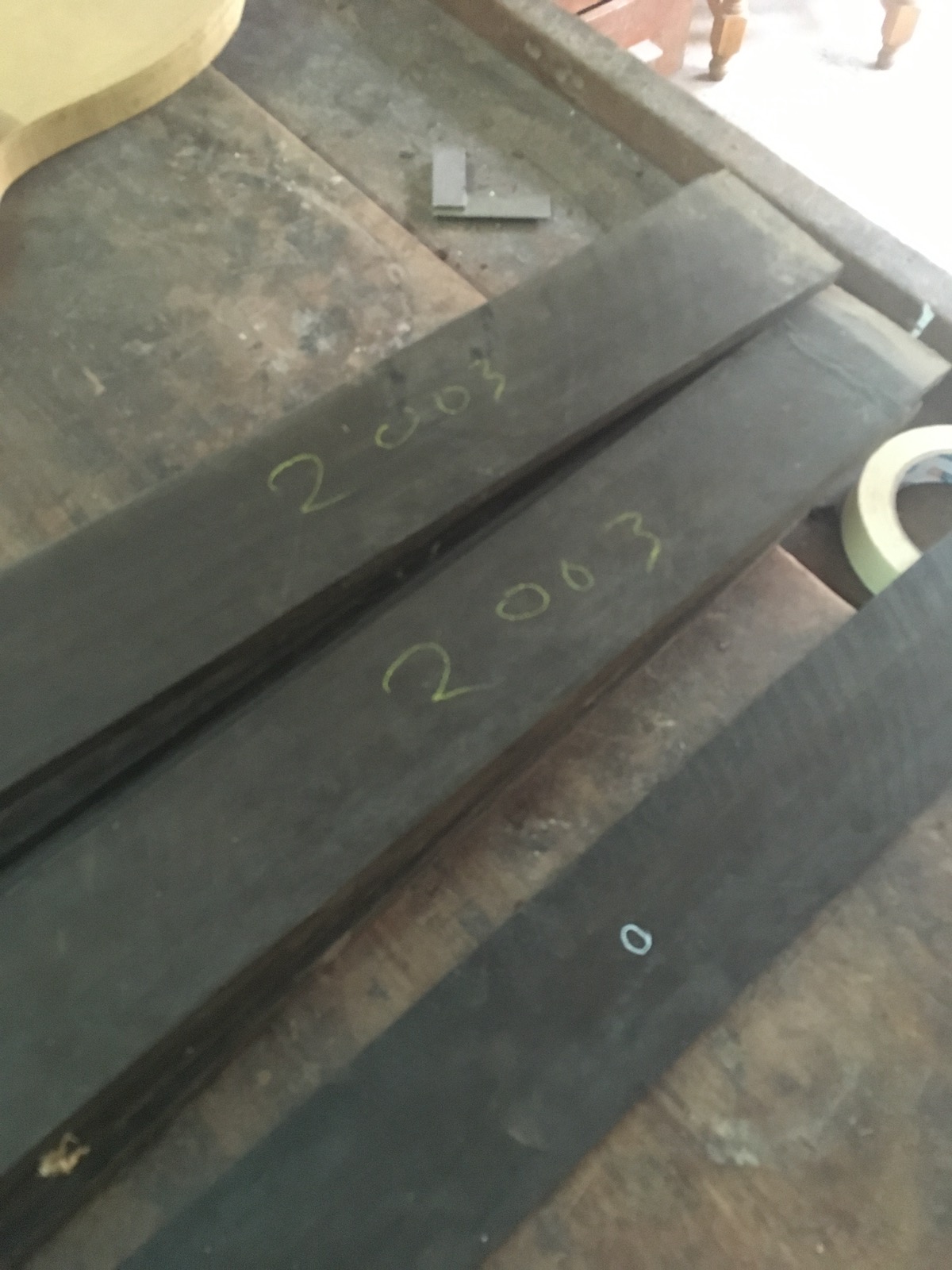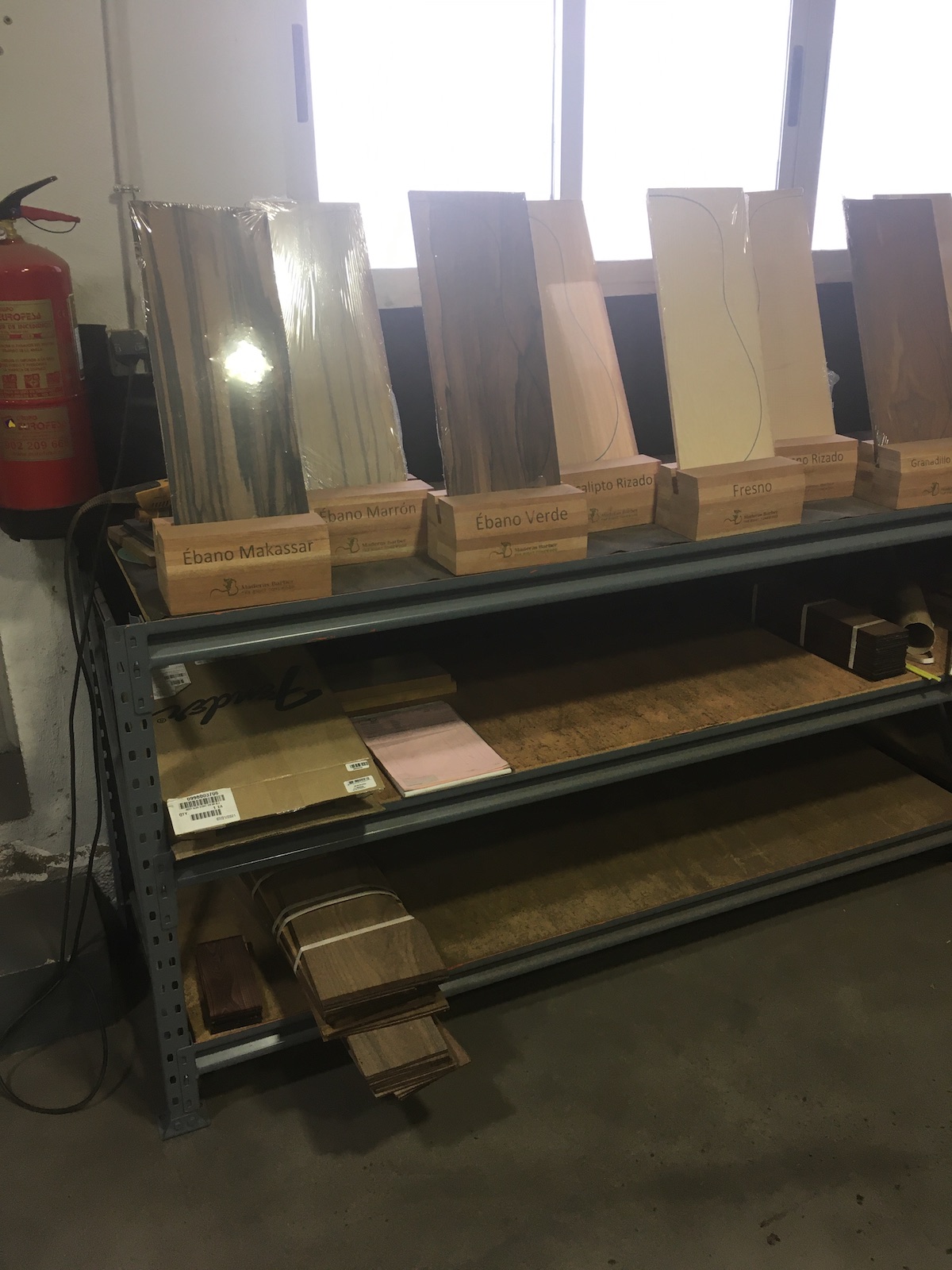Ageing your wood before you build with it is extremely important. Not doing so can cause a number of problems depending on the species. Wood loses “free” moisture quite quickly and this is what makes it warp and crack in the short term. However even after that moisture is lost (the wood is acclimated to your environment) wood continues to undergo changes which can be beneficial to the sound of your guitar and which can help with stability. The denser woods benefit more from longer seasoning times and I find that the worst is ebony. Ebony ends up glued to the top and the neck, both of which have different rates of expansion/contraction, and it gets inlaid with metal frets which have virtually no expansion rate. Typical problems are cracks where the fretboard meets the top, fret ends which poke out of the fretboard and even cupping over time. All of these things can still happen even with old ebony because it seems to be constantly contracting but good construction techniques, humidity control and using the oldest possible stock can go a long way to prevent them.
Tag Archives: flamenco
Visit to Maderas Barber
It had been some years since I made my last big purchase from Barber in Valencia until I went on Friday and stocked up on products I needed. Things have changed since I was last there but the experience was just as satisfactory. Everything seems very organised and streamlined and the selection is much greater than it ever was. I tend to use maple, cypress or rosewood for backs and sides but the choices are much wider than that if you are ready for a change.
The first time I went I drove to Valencia, made my purchases and drove back but since then I always spend the night. This time we spent two nights and visited the surrounding areas as well: the little towns around the Albufera. Very beautiful and nice paella.


Un lugar en Granada
There is a new cultural centre in Granada, a private initiative which proposes a venue for concerts, presentations, round tables and whatever else might be suggested. I attended a concert there recently and the setting was perfect! I will be proposing some classical guitar concerts there in the near future. For more information click here. 

Simple design

On one of my latest guitars I used a simple but effective design using what is fast becoming one of my favourite techniques. The only real difference is that the wood is presented with the side grain instead of the traditional end grain. And of course the design uses the limitations of the geometry instead of fighting against it. Roses, circles, waves or leaves all have to be relatively low resolution when made with a mosaic whereas a rectangular shape fits right in to the straight horizontals and verticals.
Concert model
This is the guitar that I have been making and improving since I began. It has undergone a lot of changes in general shape and internal structure. I think these changes are for the better and that I am making the best guitar I can today. I started out with a shape borrowed from Hauser and although I used his bracing it was a very different concept. I arch the top and make it thinner than he did. 


 The plan I used was of a very shallow instrument and it was relatively successful. Over the years I experimented with a deeper body, new shapes and a different internal structure and although I continue to search for improvements I have found a great combination of all these elements. My concert guitar has a bit smaller outline but is deeper and has 5 fan braces instead of 7. So, unless someone specifically asks me to go back to what I was doing before I will stick to this.
The plan I used was of a very shallow instrument and it was relatively successful. Over the years I experimented with a deeper body, new shapes and a different internal structure and although I continue to search for improvements I have found a great combination of all these elements. My concert guitar has a bit smaller outline but is deeper and has 5 fan braces instead of 7. So, unless someone specifically asks me to go back to what I was doing before I will stick to this.
